Update Office and your computer with Microsoft Update
APPLIES TO: Excel 2016 , Word 2016 , Outlook 2016 , PowerPoint 2016 , OneNote 2016 , More...
Which version do I have?
Software isn't perfect, and that's why most software companies give you updates.
The best way to get your Microsoft updates is to set your computer to install them automatically, and you can do that in Windows. Office updates are part of the Microsoft updates you get after you set up getting updates in Windows.
You can also get updates manually at any time. We recommend that you use automatic updating—but if you choose not to, be sure to check for updates at least once a week.
Turn on automatic updates in Windows 10
If you didn't turn on automatic updating when you first started using your PC, you can change your settings any time in Windows Update.
Open Windows Update by choosing Start > Settings > Update and security.
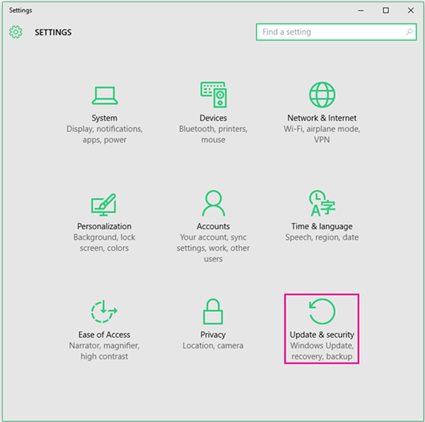
Choose Advanced options.
Under Choose how updates are installed, choose the options that you want, including checking the Give me updates for other Microsoft products when I update Windows box so you can get Office updates.
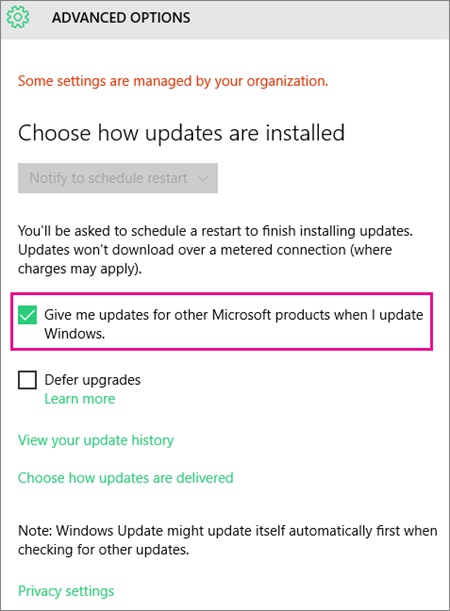
Turn on automatic updates in Windows 8 or 8.1
Open Control Panel by pressing the Windows logo key + X to see a list of commands and options, and then click Control Panel.
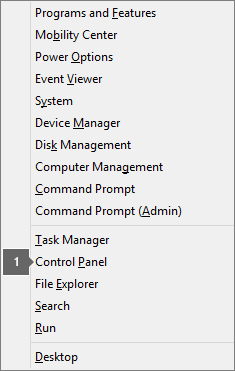
Choose System and Security.
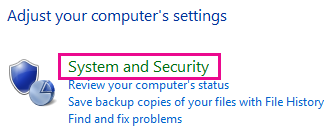
Choose Windows Update.

Choose Change settings, and choose or change the settings you want and remember your computer has to be on at the time you selected to install new updates, including checking the Give me updates for other Microsoft products when I update Windows box so you can get Office updates.

Turn on automatic updates in Windows 7
Close all open programs.
Choose Start > Control Panel.
Choose System and Security (which you see when you view Control Panel by Category).
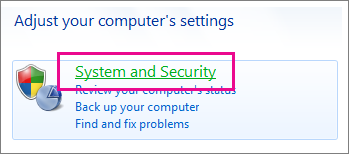
Choose Windows Update.

In the left-hand pane, choose Change Settings.
Under Important Updates, choose Install updates automatically and under Microsoft Update check the Give me updates for Microsoft products and check for new optional Microsoft software when I update Windowsbox to get the Office updates.
Your IT department might set automatic updates for you. If they do, you'll see the message in the yellow bar, and you won't be able to use the Important Updates list or set dates and times, like so:
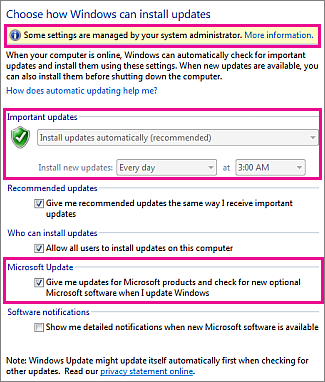
Select any other options, and remember your computer has to be on at the time you selected to install new updates.
TIPS:
If you view the items in Control Panel by their icons instead of categories, you choose System >Windows Update > Change Settings.
You'll receive updates for Office, Windows, and other products like Zune.
Updates come in three flavors: Important, Recommended, and Optional. You'll only get the important updates unless you select the second option Give me recommended updates the same way I receive important updates.
It's a good idea to install the recommended updates. The optional updates may be things you don’t need, like the ability to change the language in your Office programs. It doesn't hurt to install them, but you have to get those updates manually.
Turn on automatic updates in Windows Vista
Choose Start, point to All Programs, and then choose Windows Update.
Do any of the following:
If updates need to be installed, choose Install updates.
To start checking for updates, choose Check for updates.
For more information, choose View available updates.
In the Windows Update dialog box, choose the links to make changes or learn more about the update process.
Check for updates Search for available updates.
Change settings Select options for how your computer receives updates from Microsoft.
View update history View what has been installed and the status of those installations.
Restore hidden updates Hide updates from your computer and install them later.
Updates: frequently asked questions Learn more about the update process.
Turn on automatic updates in Windows XP
Choose Start > Control Panel.
Choose Performance and Maintenance, and then double-click System.
In the System Properties dialog box, choose the Automatic Updates tab.
Choose the settings you want to use.
Choose Apply > OK.
NOTE: In Classic view, double-click System, and then click the Automatic Updates tab.
Get updates manuallyOffice 2016
In an Office 2016 application, like Word 2016, choose File > Account > Update Options > Update Now. Office 2013
Office 2013
 Office 2013
Office 2013
In an Office 2013 application, like Word 2013, choose File > Account > Update Options > Update Now.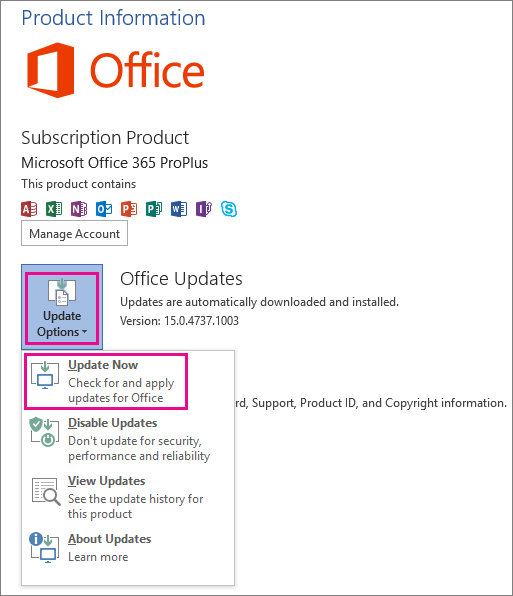 Office 2010
Office 2010
 Office 2010
Office 2010
In an Office 2010 application, like Word 2010, choose File > Help > Check for Updates.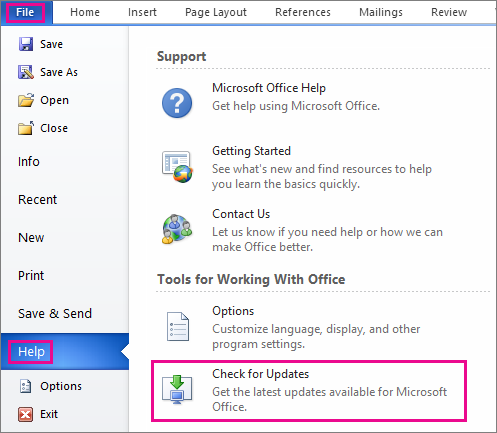 Office 2007
Office 2007
 Office 2007
Office 2007
In an Office 2007 application, like Word 2007, choose Microsoft Office Button  > Word Options >Resources > Check for Updates.
> Word Options >Resources > Check for Updates.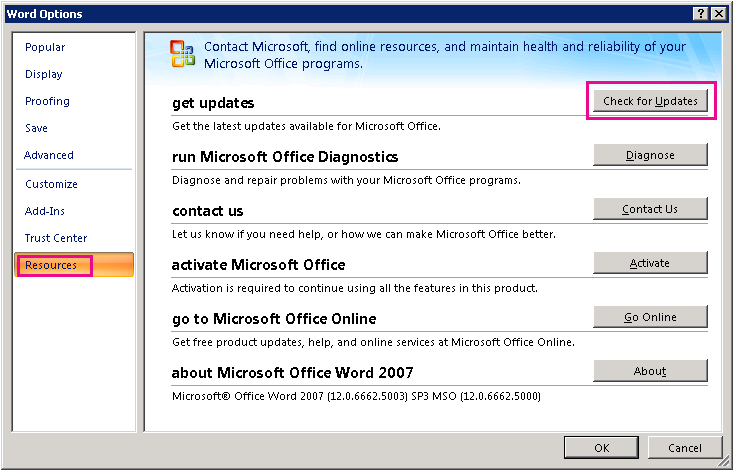
 > Word Options >Resources > Check for Updates.
> Word Options >Resources > Check for Updates.
NOTE: You might get asked to update your browser, but there should also be a tab titled Microsoft Update that you can go to and click Install so you can check for updates.For your operating system
For your operating system, follow the steps above to go to Windows Update.
Choose Check for Updates. Here's what it looks like in Windows 7.
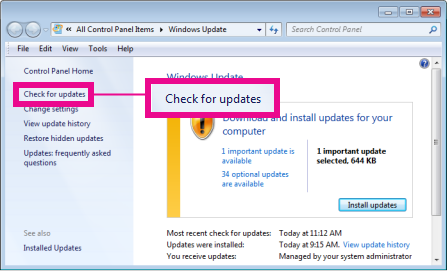
Select the updates you want to install, and choose OK.
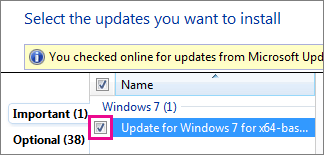
Click Install Updates.
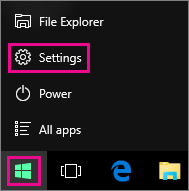
Comments